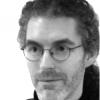This open access paper could serve as an introduction to aging clocks for someone who has previously given little attention to the ongoing attempts to build ways to quickly and cost-effectively measure biological age. Near every complex set of biological data obtained from an individual can be used to build clocks that estimate age. The present major challenge is the inability to trust the results of any specific clock for any specific scenario involving the use of therapies to treat aging. There is next to no understanding of how in detail the clock data is driven by mechanisms and dysfunctions of aging, and thus no ability to predict ahead of time whether a clock will give useful answers for any given therapy targeting a mechanism of aging. Clocks must be calibrated to their uses, and this is a slow and expensive process.
Aging research has delineated the aging process by classifying two separate but interconnected mechanisms: intrinsic and extrinsic aging. Intrinsic aging describes changes in biological hallmarks including cellular and molecular changes, genetics, and hormonal changes that have been described to occur naturally over time. Extrinsic aging, however, is regulated by exposure to environmental stressors, dietary habits, oxidative stress, and other factors that accelerate physiologic aging. Traditionally, aging has been quantified by chronological age, which is the exact number of years an individual has lived. However, chronological age does not fully capture the heterogeneity of the aging process, excluding many extrinsic factors that contribute to aging.
Subsequently, the calculation of biological age, which aims to account for interindividual variations in aging rate, has become a topic of interest in aging research. Aging clock models are tools that utilize various modeling approaches to estimate chronological or biological age. Moreover, aging clock models can estimate the rate of aging (ΔAge), otherwise known as the difference between model-predicted biological age and chronological age. Positive differences between model-predicted biological age and chronological age indicate accelerated aging whereas a negative difference indicates decelerated aging. If the calculated ΔAge exceeds the mean absolute error (MAE) of the aging rate estimation, these individuals can be determined to be fast or slow agers.
Aging clocks models may utilize any hallmark changes that occur because of aging, and these may include epigenetic changes, telomere length, genomic stability, altered intercellular communication, chronic inflammation, and gut microbiome dysbiosis, among others. Notably, some of the first aging clock models include the Horvath clock (2013) and Hannum clock (2013), which are both epigenetic clocks modeled after changes in DNA methylation patterns and varying cytosine phosphate guanine (CpG) sites across the genome. Several aging clock models have emerged since then, varying from microbiome-based clocks to proteomic clocks.
Link: https://doi.org/10.3389/fragi.2024.1487260
View the full article at FightAging








































